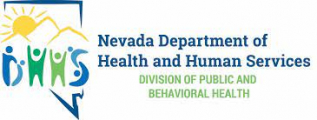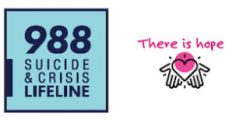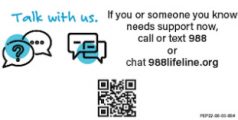Download the Information Card
Needed Items
A small container such as a condiment cup
Fill half (1/2) full with water (15 mL). (The amount of water will be the same no matter the size of the container)If the substance you are testing is a stimulant such as methamphetamine, cocaine, or MDMA use 30 mL worth of water.
ONE (1) fentanyl test strip
For Injection: New, clean materials
For powder/pills: Small amount of powder to test (about the size of a match head)
How to Test
For Injection:
- Add 10 drops of water to the remains of the substance mixture after you draw your shot
For Powder/Pills:
Mix a match head size amount of powder into the water
Hold the solid blue end of the test strip and dip the other end into the water mixture
Hold strip in the mixture for about ten (10) to fifteen (15) seconds. (You will know it’s ready when the water is sucked up into the white part of the strip.)
Remove from water mixture and wait for one minute (60 seconds)
View the strip and count the number of red lines visible (even very light red lines count)
ONE (1) red line means there IS fentanyl in the sample
TWO (2) red lines mean there is NO fentanyl in the sample
If the Test is Positive
Option 1: Do not use the substance. To dispose, you can mix it in a sealed plastic bag with dirt, coffee grounds, kitty litter or in a deterra bag and throw it in the garbage.
Option 2: Slow/Reduce your use. Start with a small dose and go slowly. Be aware of the symptoms of an overdose and follow overdose prevention tips.
What is Fentanyl?
Fentanyl is a more powerful opioid that increases risk of overdose
Fentanyl is now commonly found in other substances including, but not limited to heroin, methamphetamine, cocaine, MDMA and has even been found in marijuana
Fentanyl cannot be detected by sight, taste, smell or touch
Overdose Prevention Tips
Have naloxone on hand. Fentanyl may be found in all drugs. Naloxone distribution sites can be found at: nvopioidresponse.org/harm-reduction/overdose-reversal-medication/finder/
Test your supply. Knowing if fentanyl is present can give you options on how or whether to use the drug. Fentanyl distribution sites can be found at: nvopioidresponse.org/harm-reduction/fts/fts-finder/
Never use alone. Having someone with you allows them to administer naloxone and call for assistance if you overdose.
I f you do use alone, have someone check on you. You can ask someone to call, text, or view you in 5 minutes of use. You don’t need to tell them why they are checking on you, just that you want to talk to them.
If you do use alone, don’t use behind a locked door. Locked doors slow down the ability to assist you. Even if you need privacy, don’t lock the door.
Use slowly and/or use less. This will reduce your risk in case fentanyl is present in your supply. The test only catches what is present in the amount that you tested. Fentanyl may still be the rest of your supply.
This project was supported in whole or in part by the Nevada Division of Public and Behavioral Health Bureau of Behavioral Health, Prevention, and Wellness through funding provided by the Nevada State Opioid Response Grant awarded by the Substance Abuse and Mental Health Services Administration.




